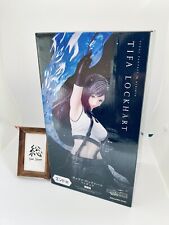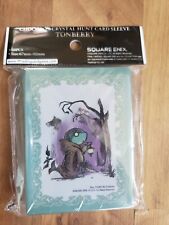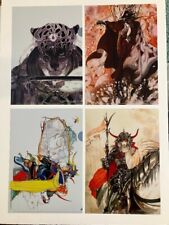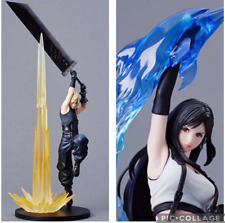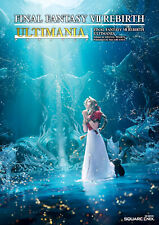What Makes a Final Fantasy?
Twenty years. Over twenty games, not including expansion packs, ports, and remakes. Thirteen systems (including the PC, the MSX, and mobile phones). Two anime series, two full-length movies, even a Potion drink. Final Fantasy started off as a last-ditch attempt by a plucky startup company and now is nothing less than a gaming and marketing juggernaut. But what does Final Fantasy mean? Does Square-Enix simply tack on the name to any game they want to sell well? Is it a particular gameplay mechanism? Style? Story? Staff members? Let's deconstruct what makes a Final Fantasy.
The Name
The name "Final Fantasy" is now one of the most ironic in any industry. Although the original Final Fantasy was thought to be the last one Squaresoft might make, there now seem to be three or four coming out in any given year (albeit many of those being rehashes or spinoffs of previous games). What's interesting, though, is that back when RPGs were the sole domain of pimply-faced white male teenagers (i.e. before the marketing whirlwind that was FFVII), the success of the first Final Fantasy drove Squaresoft to localize a bunch of games with the Final Fantasy name on it in the hopes of driving up sales. The main examples of this were the Final Fantasy Legend series for Game Boy; many people don't realize that these games were released as SaGa in Japan, and are actually part of the same series as SaGa Frontier and Unlimited SaGa. In addition, it released Final Fantasy Adventure for the same platform; in Japan it was known as Seiken Densetsu, a series which is sold on this side of the pond as the Mana series. (Interestingly, though, the first Seiken Densetsu did indeed have the subtitle "Final Fantasy Gaiden" or "side story", which shared several of the familiar features we outline below.)
Having cleared that up, let's try to concentrate on the numbered Final Fantasies as the bellwethers of defining the series (although games like FF Tactics and Dirge of Cerberus are still Final Fantasies, as we will see). Can we tease out the commonalities that make them what they are?
Gameplay Mechanics
The one most obvious aspect to Final Fantasy games is the one that, oddly enough, seems to be the least consistent amongst the games. Certainly, the first nine or ten games seem to have the same basic gameplay systems. Explore areas, talk to people, buy items, equipment, and spells, use menus to configure your characters, and fight battles. This formula has remained largely unchanged for the most part, but there are certainly many other games, even by the same developer, which follow the same system and yet are not Final Fantasies, such as Chrono Trigger and Xenogears.
Looking at the battle system itself, Final Fantasy is well-known for having two separate systems even in the first, largely static epoch. Numbers I through III had a simple turn-based system, while numbers IV through IX introduced the famous Active Time Battle (ATB) system. Since then, each entry in the series has drastically altered even how battles themselves take place, with FFX introducing a non-real-time system where characters can instantly swap out, FFX-2 changing over to a much faster-paced ATB system with dynamic jobs, and FFXII eschewing random battles altogether for a constantly battling dungeon area and complex AI "gambits".
Clearly, trying to look at gameplay by itself won't get us anywhere. Let's turn our attention to the content of the individual games.
Setting
It's called "Final Fantasy", right? It must take place in a fantasy setting, right? We'd be wrong there, but on the right track.
Each game, other than the sequels, take place in an entirely different world, completely unconnected from its predecessors. There are virtually no characters who appear in multiple games (at least not as the same character). What's more, even the general settings are wildly different. Early games such as FFI and FFIII are pretty much pure Dungeons & Dragons fantasy settings; since then, we've since seen the dark, steampunk vibe of FFVI, the futuristic dystopia of FFVII, the more modern-feeling FFVIII, the tropical FFX, and the political intrigue-laced medieval FFXII.
One thing that can be said, however, is that every single game in the series mixes technology and fantasy. Even the very first offering had a robot and airships, unusual anachronisms in its generic fantasy world. Many of the games have airships for public use, or involve space travel. The more futuristic FFVII and FFVIII still have ample evidence of magic and spiritual power, and the main characters invariably use swords rather than guns, the only exception being the RPG/shooter hybrid Dirge of Cerberus: FFVII. Clearly, the dichotomy between fantasy and science is one of the hallmarks of a Final Fantasy game.
Species
While the general details of the games differ wildly, it's in the specifics where we'll begin to find a larger hint to the family dynamics of Final Fantasy. Most common are its mascots, the original creatures and animals created by Squaresoft and used extensively throughout the series. Most well-known, of course, is the bird used as transportation, the chocobo. Widely assumed to have been inspired by similar birds in the anime Nausicaa of the Valley of the Wind, chocobos have played a role in nearly every Final Fantasy (with the exception of FFI, where they hadn't been invented yet). Chocobos have gone on to star in their own, kid-centered Final Fantasy games, the Chocobo's Mysterious Dungeon series and its spinoffs, including several games unreleased in North America (we did get Chocobo and the Magic Picture Book).
The other star of the series is the lovable Moogle. Known as Mogri in Japan (a mix of "mole" and "bat"), the word Moogle was coined by Ted Woolsey, the translator of FFVI. While they haven't appeared in person in every game (with conspicuous absences in FFI, II, and IV), the vast majority of them have moogles of some sort somewhere. For example, FFVIII has a "Mini-Mog" summon only obtainable via the Chocobo World add-on game, and FFX has a Moogle doll used as a weapon. Their appearance has changed over the years as well, especially in the newer Ivalice games such as FF Tactics Advance, but they remain an instantly recognizable aspect of the series.
It doesn't stop there, though. Many creatures who started off as generic monsters began getting their own following in later games. These include the strong-but-silent Cactuars (known as Sabotenders in Japan), the cute but scary knife-wielding Tonberries, bombastic Bombs, powerful purple Behemoths, squishy Flans, punchy Goblins, and foul-breathed Malboros. Often, these colorful creatures appear in mini-games or have their own conclaves and civilizations (such as the Cactuar Village in FFX or the Tonberries in FFXI).
Character Crossovers
Although it was stated above that few characters cross over between games, there's one that everybody knows: Cid. He appears in a different guise in virtually every Final Fantasy (he's absent from FFI) as a technological genius. He's often related to your airship in some way, is almost always older than the fresh-faced protagonists, and usually crusty and outspoken. His roles have ranged from plain old NPCs to playable characters (FFIV, FFVII, and FF Tactics) and even villains (FFXII).
Later games have often featued cameos by two buddies, Biggs and Wedge. Named after Luke Skywalker's wingmen in Star Wars Episode IV, they're sometimes bad guys, sometimes good guys, and sometimes just sitting on the edge watching things. They're nearly always hapless comedy relief, though, and seeing them usually brings a smile out!
Finally, one of the most popular characters in FF has been the multi-armed Gilgamesh. After stealing the spotlight from his far duller boss Exdeath in FFV, he's appeared as a summon in FFVIII, a hustler in FFIX, and a mark to be hunted in FFXII (with his first voiced appearance). His signature theme, Battle on the Big Bridge, has been covered by Nobuo Uematsu's hard rock band the Black Mages and remixed for FFXII. He's probably the only sidekick in an FF game to have his own sidekick, Enkidu.
Fans often comment that final bosses in FF games tend to be long-haired pretty boys... however, this is largely undeserved, and based off only three games in the series (VII, IX, and X). In any case, this is an anime staple and certainly not limited to Final Fantasy games in the least.
Summons
A staple of the series since FFIII, summons have remained mostly the same while constantly being reinvented visually. One of the interesting aspects to them is that while they have always been called shoukanjuu (Summoned Beasts) in Japanese, their translated name changes almost with every new game. FFVI called them Espers, VII reverted to Summons, VIII used Guardian Forces, IX had the unusual term Eidolons, X invented Aeons, and XII went back to Espers. They often play an integral part in the story; individual summons provide important plot points in FFIV, VI, IX, and X, whereas GFs in general impact the story of VIII.
The summons themselves are as familiar as chocobos. The most famous would be the fiery Ifrit, ice-cold Shiva, enemy-slicing Odin, sinewy Leviathan, and draconic Bahamut, who all appear in some form in almost every iteration. Others that make common but not constant appearances include lightning god Ramuh, holy castle Alexander, protective Carbuncle, revivifying Phoenix, and earth giant Titan; whereas each game generally has some of its own unique offerings.
Items, Equipment, and Spells
Getting even more in-depth than monsters and summons, individual items appear consistently throughout the series. These include the ubiquitous Potion and its various permutations, Ethers, Elixirs and Megalixirs, Phoenix Downs, Antidotes, Eye Drops, Echo Grass, Gold Needle/Soft, Tents, and myriad other pieces of healing mojo, as well as a Chocobo's favorite food, Gysahl Greens (named after a town in FFIII). A look at armor will almost always yield an Aegis Shield, Mythril equipment, Genji Glove, and the status-protecting Ribbon. Weapons usually include the Excalibur and Ragnarok swords, the Masamune katana, and the powerful Ultima Weapon.
Spells are instantly recognizable as well. The tried-and-true Fire/Fira/Firaga, Blizzard/Blizzara/Blizzaga, Thunder/Thundara/Thundaga, and Cure/Cura/Curaga have stuck around in various guises in every game. You'll also see Raise to revive your characters, Esuna to cure their status ailments, Haste, Slow, and Stop to manipulate time, Libra to scan enemies' weaknesses, Gravity to chop off a fraction of enemies' HP, Poison and Bio to debilitate them, Quake to shake them up, Shell and Protect to keep them safe, and Flare and Ultima to blow them away.
Music
"The world is veiled in darkness. The wind stops, the sea is wild, and the earth begins to rot. The people wait, their only hope, a prophecy... 'When the world is in darkness Four Warriors will come...' After a long journey, four young warriors arrive, each holding an ORB." This apocalyptic script was the first thing greeting Final Fantasy pioneers after popping the first game into their NES. However, the impact of these words would have been negligible if it weren't for the soaring arpeggios of the Prelude theme washing over us. This theme became as familiar as Chocobos as it began or ended, in some way, almost every game in the series (with the notable exception of FFVIII).
The Chocobo theme itself has been reimagined in practically every game since its inception in FFII; mambos, electronica, pop tunes, brass band, or Hawaiian ukeleles. Likewise, whenever Moogles appear, their own signature tune usually plays as well. And who can forget the grandiose tune known only as "Final Fantasy"; often illustrating the ending, it was first heard when your party crossed the Northern Bridge in the original game.
Summary
Final Fantasy is quite difficult to pin down as an idea. Games featuring the name have varied from traditional Japanese RPGs to tactical RPGs, first-person shooters, and MMORPGs. Stories, characters and worlds come and go. But they all have familiar features which greet us like old friends when we encounter them. A world which mixes fantasy and technology; Chocobos and Moogles; Ifrit and Shiva; Firaga and Ultima; Excalibur and Ragnarok; a man named Cid; Prelude and Final Fantasy.
Here's hoping for another twenty years of memories.

Final Fantasy VII Rebirth FF 7 D prize Kuji Mini Figure Set
$80.00
Final Fantasy VII Rebirth FF7 G prize Kuji Mini Figure 7 types Set
$84.00
Final Fantasy VII Rebirth FF7 G prize Kuji Mini Figure Complete 8 types Set
$189.00
$7.99
Final Fantasy VII Polygon Figure Set of 7 Kuji Remake SquareEnix w/Box [Mint]
$88.99
Final Fantasy VII Rebirth Tifa Lockhart Figure Prize Last One End Prize FF7 Kuji
$174.88
Official Final Fantasy TCG FFTCG Chocobo's Crystal Hunt Card Sleeves - Tonberry
$14.99
Set of 4 Amano Fantasy Exhibition Clear Files Final Fantasy Vampire Hunter D
$55.00
Final Fantasy VII FF7 Rebirth Kuji Tifa & Cloud Figure set A &End SQUARE ENIX
$259.99
Final Fantasy VII Rebirth Ultimania Guide Book (FedEx/DHL)
$42.99
Final Fantasy, all games and animation bearing the Final Fantasy name, and all characters in said games or animation are copyright their respective creators, including but not limited to Squaresoft, Square Enix, Square EA, Tokyo TV, and ADV Films.
 Characters
Characters Places
Places Stories
Stories Species
Species Organizations
Organizations Glossary
Glossary Transportation
Transportation Monsters
Monsters Jobs
Jobs Summons
Summons Items
Items Magic/Skills
Magic/Skills Weapon Types
Weapon Types In-Crossovers
In-Crossovers Ex-Crossovers
Ex-Crossovers Release Dates
Release Dates Name Origins
Name Origins Famous Moments
Famous Moments Music Database
Music Database Features
Features Game Help
Game Help Game Evolution
Game Evolution Square Art
Square Art Fan Flash
Fan Flash Final Fantasy Forums
Final Fantasy Forums Updates
Updates Site Info
Site Info Feedback
Feedback Full Index
Full Index Links
Links Staff
Staff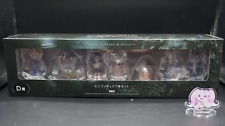
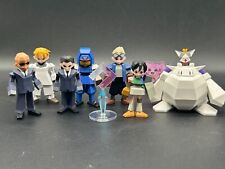

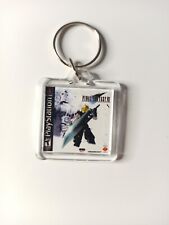
![Final Fantasy VII Polygon Figure Set of 7 Kuji Remake SquareEnix w/Box [Mint] picture](/store/img/g/0PEAAOSwfoVmAYEZ/s-l225/Final-Fantasy-VII-Polygon-Figure-Set-of-7-Kuji-Rem.jpg)
